Exploring the Wonders of Oceanic Treasures
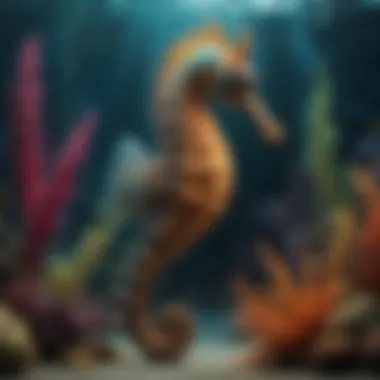
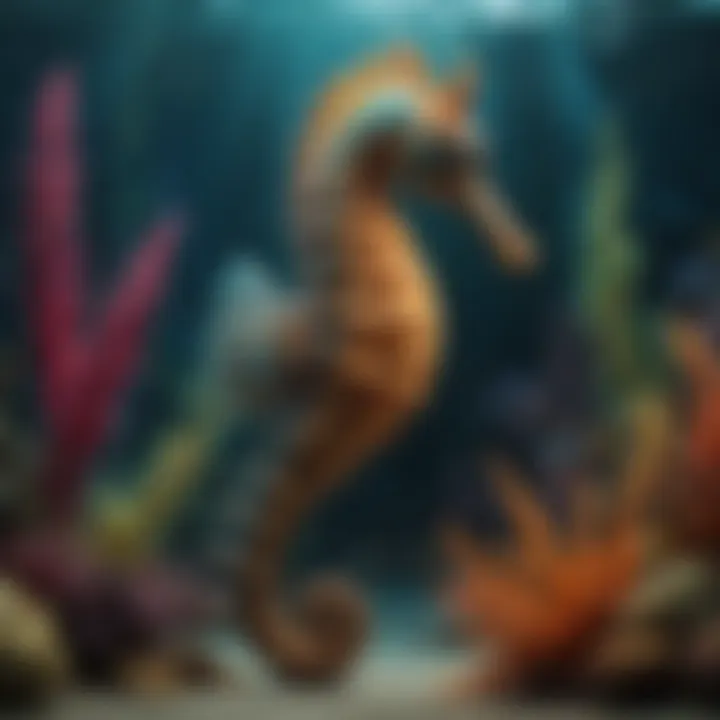
Intro
The ocean, often regarded as the last frontier on Earth, harbors a wealth of mysteries and marvels that remain largely unexplored. Beyond the waves, an incredible tapestry of life flourishes, showcasing ecosystems that demonstrate resilience and diversity. This interconnected world plays a vital role in regulating our climate while also forming the backbone of our planet's biodiversity.
As we journey through the oceans, we unearth their hidden treasures—unique species that adapt to extreme conditions, vast underwater landscapes rich with nutrients, and stories of human interaction that have shaped their destiny. The more we learn about these environments, the clearer it becomes that their preservation is vital not just for marine life, but also for humanity's future.
This examination delves into the various aspects of oceanic wonders, underscoring the urgent need for conservation as it highlights the challenges imposed by pollution, climate change, and overfishing. As citizens of the planet, it falls upon us to understand these intricacies, arming ourselves with knowledge that can help protect and celebrate our oceans for generations to come.
By exploring recent developments and ongoing initiatives in ocean conservation, we can connect the dots between our actions and the health of this vital resource. So buckle up as we set sail on this quest to unveil the secrets of the deep blue sea, and in turn, discover how we can play our part in preserving these invaluable ecological treasures.
Intro to Oceanic Wonders
The ocean, which covers more than 70% of our planet's surface, is often seen as a vast and mysterious expanse. It is much more than just beautiful blue waters; it’s a complex system that plays a critical role in sustaining life, regulating climate, and shaping the geography of Earth. Understanding the ocean's fundamental importance cannot be overstated, as it is central to both ecological balance and human existence. This section aims to highlight the unique elements of oceanic wonders and the myriad benefits they bring to our planet, while also addressing pressing considerations we face today.
Understanding the Ocean's Importance
The ocean serves as the planet's great equalizer, influencing weather patterns and acting as the primary reservoir for a significant portion of the Earth's carbon. The processes that occur under the surface—like photosynthesis by plankton—are not just fascinating phenomena; they are crucial for producing a majority of the oxygen we breathe. Moreover, oceans support a diverse range of ecosystems that are home to millions of species, many of which are still uncharted.
- Economic Value: The ocean is a source of sustenance for billions. Besides being a friend to fishermen, it supports tourism, recreation, and maritime trade, which are fundamental to various economies.
- Cultural Significance: Many cultures have strong ties to the ocean, using it not just for food, but as part of their spiritual and community practices.
- Biodiversity: The vibrant ecosystems found within coral reefs and deep-sea habitats boast immense biodiversity that is essential for ecological health.
Given these importance of oceans, neglecting their health could result in dire consequences, affecting not just marine life, but humanity at large. Understanding what lies beneath the waves may very well hold the key to unlocking sustainable futures.
Myth and Reality of Ocean Life
The allure of the ocean is often steeped in myth and romanticism, giving rise to false perceptions about its inhabitants and ecosystems. Growing up, many of us were enchanted by tales of mermaids, sea monsters, and hidden treasures. But the actual reality of life in the ocean is far more intricate and often far less glamorous.
- Many creatures, such as jellyfish and bioluminescent plankton, defy the simplistic narratives we build around ocean life. Their ecological roles are vital, yet often overlooked.
- Giant Squid: Once thought to be mere myth, the giant squid’s existence is now acknowledged, stirring fascination and giving depth to our understanding of biodiversity.
- Coral Reefs: While often dubbed the "rainforests of the sea," the reality is that they are fragile ecosystems facing threats from climate change and human activity.
- Deep Sea Life: Much of the ocean remains unexplored, and what we do know reveals a life that is mysterious and often irreplaceable.
Flipping the script on commonly held beliefs about oceanic life invites a deeper appreciation and responsibility towards ocean conservation. Only by illuminating these realities can we pursue effective actions to preserve the wonders of our oceans for future generations.
The Ocean's Ecosystems
The oceans on our planet serve as a bedrock for life, framing divers ecosystems that underpin not only marine life but also our terrestrial existence. They regulate climate, provide essential resources, and house resilient habitats. Each ecosystem plays a unique role and provides benefits that amplify the value of the ocean.
Coral Reefs: The Underwater Cities
Coral reefs are sometimes referred to as the rainforests of the ocean, and for good reason. Structure and Function
Corals, made up of tiny animals called polyps, create a complex structure that serves as a habitat for countless aquatic species. They act as nurseries for fish, provide shelter, and contribute to biodiversity. The ecological interdependence amongst coral species, algae, and various fish underscores the balance required for a healthy marine ecosystem. One of the compelling characteristics of coral structures is their ability to grow and rebuild over time, serving as a stabilizing force within their respective regions.
Impacts of Climate Change
Climate change poses a significant threat to coral reefs. Rising ocean temperatures and increased acidity can lead to coral bleaching, a phenomenon where corals lose their vibrant colors due to stress. This not just affects the corals but also the many species that depend on them. If unchecked, these impacts can dismantle entire ecosystems, leading to a cascading effect on marine life and human communities reliant on these systems.
Conservation Efforts
Efforts to conserve reefs range from creating Marine Protected Areas to promoting sustainable fishing practices. These strategies aim to shield reefs from further degradation. One unique feature of such conservation efforts includes community participation in monitoring and restoration activities. This approach not only empowers local inhabitants but also engenders a sense of stewardship that is crucial for long-term success.
Deep Sea Exploration
The vast unexplored regions of the ocean present a treasure trove of opportunities for scientific discovery. Technological Advances
Recent advancements in technology, such as remotely operated vehicles and autonomous underwater drones, have opened gateways to previously unreachable depths. These tools allow scientists to gather invaluable data on underwater ecosystems, species compositions, and even geological formations. A key characteristic of these technological strides is their ability to operate in high-pressure environments, which significantly enhance our understanding of the ocean’s mysteries.
Uncharted Territories
The term 'uncharted territories' resonates profoundly when considering the ocean. There exist areas that scientists have not yet explored, some of them possibly housing undiscovered species. Delving into these territories can unveil ecological relationships that might exist nowhere else. However, the challenge lies in balancing exploration with conservation efforts to ensure that these pristine regions are not irreparably harmed by human activity.
Unique Adaptations
Adaptations of organisms in the deep sea are nothing short of fascinating. Creatures like the anglerfish and giant squid exhibit remarkable features that help them survive in extreme conditions such as darkness and high pressure. These adaptations pique scientific curiosity, providing insight into evolution and biodiversity. Yet, intriguing adaptations also come with risks; as human intrusion increases, we could lose these unique species before fully understanding them.
Estuaries and Mangroves
Estuaries and mangroves stand as crucial ecosystems, acting as the interface between land and sea. Ecological Significance
These environments are crucial for filtering pollutants and providing nurseries for young marine species, thus playing an essential role in sustaining biodiversity. Their complex root systems stabilize shorelines and reduce the impact of storm surges, showcasing their dual role as habitats and buffers against climate effects.
Biodiversity Hotspots
Estuaries and mangroves are renowned for their rich biodiversity, with a plethora of species relying on these habitats for survival. The intermingling of fresh and saltwater creates unique ecological niches that foster a rich blend of life forms, including various fish, birds, and invertebrates. This diversity is often considered a key benefit as it contributes to the resilience of the ecosystems against changes and disturbances.
Threats and Preservation
These ecosystems face significant threats from urbanization, pollution, and climate change. Destruction of mangroves and estuarine habitats can lead to loss of biodiversity and diminished protection for coastal communities. Preservation efforts, such as sustainable tourism and replanting initiatives, are vital. These unique features of mangrove ecosystems offer both a challenge and an opportunity: to safeguard these essential resources while still benefiting from them.

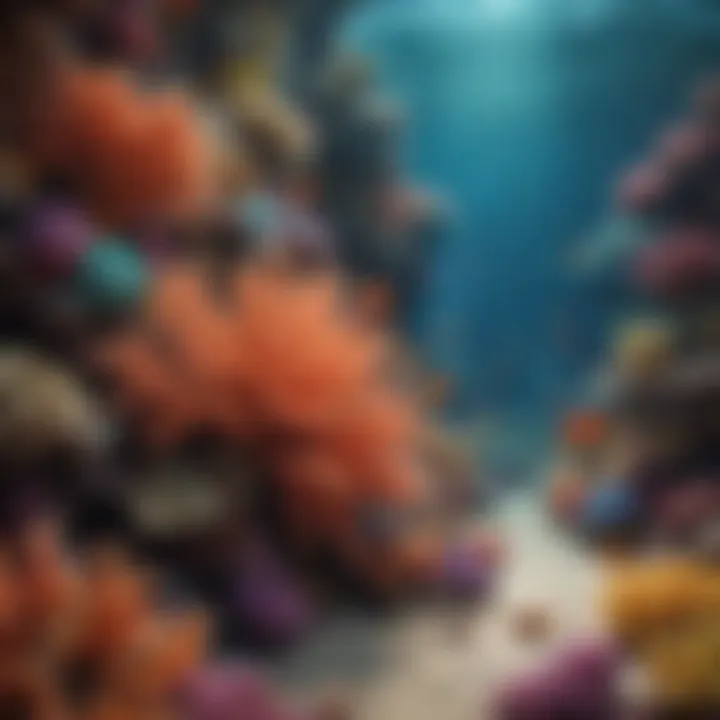
Marine Biodiversity
Marine biodiversity refers to the variety of life forms found in ocean waters, encompassing everything from tiny plankton to magnificent whales. This topic is crucial to the article as it offers insights into how these life forms interact and sustain each other. Healthy ecosystems in the ocean can provide numerous benefits, such as maintaining food webs, contributing to climate regulation, and even offering pharmaceuticals. Understanding marine biodiversity can shed light on the ecological significance that oceans hold.
Fish Species: Beyond the Basics
Role in the Food Web
The role of fish in the food web is vital. They are often positioned in various tiers—from small baitfish that serve as meals for larger predators to significant species like tuna and sharks that are apex predators in their environments.
- Key Characteristic: Fish play both predator and prey roles, showcasing their adaptability. This dual role stabilizes ecosystem health against population booms and declines.
- Unique Feature: Some fish species exhibit remarkable migratory behaviors. For instance, salmon travel upstream to spawn, impacting nutrient cycling in both marine and freshwater systems. This adaptability not only nourishes their populations but nurtures ecosystems.
- Advantages: Understanding these interactions within the food web illuminates how each species contributes to overall ocean health. However, overfishing can lead to imbalances, threatening these complex relationships.
Behavioral Patterns
Exploring the behavioral patterns of fish reveals much about their survival strategies. Schools of fish, for example, exhibit behavior known as schooling, where they swim together as a coordinated group.
- Key Characteristic: Schooling enhances protection from predators and increases foraging efficiency. Such tactics can be fascinating while also vital for survival.
- Unique Feature: Certain species can change their behavior based on environmental cues, like changes in water temperature or the presence of predators. This plasticity is crucial in adapting to environmental stresses.
- Advantages: Recognizing these behavioral patterns enhances conservation efforts by informing us how changes in habitat can impact fish populations. However, behavioral alterations can sometimes lead to competition for limited resources, causing unforeseen consequences in vulnerable species.
Endangered Species
The subject of endangered fish species unearths the fragility of marine ecosystems. Numerous fish populations are dwindling, prompting concern for their roles in biodiversity.
- Key Characteristic: Many endangered species, like the Atlantic bluefin tuna, are crucial to both ecological balance and human economies. Their decline poses risks not just to their specific ecosystems but also to the human communities relying on them.
- Unique Feature: Some species find themselves at risk due to specific human-induced factors such as habitat destruction and pollution. Their rarity amplifies global conversations about sustainable fishing practices.
- Advantages: Highlighting endangered species will raise awareness on broader environmental impacts. Yet, as they grow in rarity, it becomes more challenging to implement effective measures without misunderstanding the complexities of their ecosystems.
Marine Mammals: Intelligence in the Sea
Dolphins and Whales
Dolphins and whales are often seen as the "intellects" of the marine realm. These mammalian inhabitants exhibit complex social structures and a range of communication styles.
- Key Characteristic: Their intelligence is often compared to that of primates, with strategies employed for hunting and socializing.
- Unique Feature: Behavior such as echolocation in dolphins allows them to navigate and hunt efficiently in murky ocean waters. This efficient communication enhances teamwork within their pods, showing sophisticated social dynamics.
- Advantages: Understanding these behaviors aids in conservation efforts and supports public interest in marine protection. However, noise pollution from human activities has been known to disrupt their vital communication, affecting their survival.
Communication and Social Structures
The communication systems among marine mammals form an essential area of study. Social hierarchies can vary greatly, affecting group dynamics.
- Key Characteristic: Many species use vocalizations for coordination during hunts or establish social bonds.
- Unique Feature: The social structures in orca pods, for instance, revolve around matriarchs, representing strong familial ties. This complex structure emphasizes the importance of family within marine environments.
- Advantages: Insights into social structures pave paths for protecting species that need group cohesion, but overharvesting or habitat destruction can disrupt these essential relationships.
Conservation Status
The conservation status of marine mammals reveals critical information about the health of ocean ecosystems. Many marine mammals are threatened or endangered due to various factors, including habitat loss and climate change.
- Key Characteristic: Marine mammals often serve as indicators of ocean health, meaning their well-being reflects broader environmental conditions.
- Unique Feature: Some species have ongoing conservation efforts, such as the North Atlantic right whale, whose stark decline reminds us of the urgent need for protective measures.
- Advantages: By prioritizing conservation, we can secure the health of entire ecosystems. Yet, political and economic factors may hinder sustained efforts, exposing the fragility of these giant guardians of the sea.
Invertebrates: The Unsung Heroes
Role in Ecosystems
Invertebrates are often overlooked despite their critical role in marine ecosystems. They contribute to ocean health, from coral polyps forming reefs to mollusks acting as natural filters.
- Key Characteristic: Somes species serve as foundational species supporting biodiversity.
- Unique Feature: Invertebrates participate in nutrient cycling, decompeting organic matter, and providing habitat for fish.
- Advantages: Highlighting their importance could shift perceptions on conservation priorities. However, their relatively small size often causes them to be neglected in conservation efforts.
Unique Characteristics
The unique characteristics of invertebrates enhance our understanding of marine life. They exhibit adaptability, with features ranging from bioluminescence in jellyfish to elaborate camouflage in octopuses.
- Key Characteristic: Adaptability allows them to thrive in diverse environments, smoothing the ecosystem’s resilience.
- Unique Feature: Many invertebrates can regenerate lost body parts, a trait that can inform biological and medical research.
- Advantages: Their unique adaptations have implications for science and conservation practices, though change in climate threatens these extraordinary beings.
Threats from Pollution
Invertebrates face mounting threats from pollution, leading to declines in populations and health. Ocean acidification and plastic pollution are significant stressors.
- Key Characteristic: Certain indicators in invertebrate populations signal ecosystem distress, particularly in coral reef environments.
- Unique Feature: Their sensitivity to pollutants makes them effective bioindicators for environmental health discussions.
- Advantages: Emphasizing the threats they face can bolster calls for cleaner ocean practices, but too often, their plight doesn’t attract sufficient activism or attention from wider audiences.
Human Impact on Ocean Life
The ocean is a complex, living tapestry that supports a myriad of life forms. However, human activities have significantly influenced its health and stability. Understanding human impact on ocean life is essential to grasp the challenges faced by marine ecosystems and to find ways to mitigate these pressures. The ocean doesn’t exist in isolation; it’s a dynamic system that interacts with the atmosphere, land, and even space. When we disrupt its natural processes, we affect not just marine creatures but also terrestrial life, including our own.
There are numerous factors to examine regarding how humanity is affecting this vast underwater world. From pollution to overfishing, each element plays a crucial role in the degradation of marine habitats and biodiversity. Recognizing these influences allows us to take informed steps towards a more sustainable coexistence with our oceans.
Pollution: A Global Concern
Types of Marine Pollution
Marine pollution stems from various sources, including industrial discharges, plastic waste, and agricultural runoff. This pollution can be broadly categorized into several types:
- Plastic pollution: This is perhaps the most visible form, comprising everything from microplastics to large debris. It affects marine life that may ingest or become entangled in waste.
- Chemical pollutants: Substances like heavy metals and pesticides can run off into waterways, harming wildlife and ecosystems.
- Oil spills: Though less frequent, when they happen, they are catastrophic, coating marine habitats and threatening wildlife.
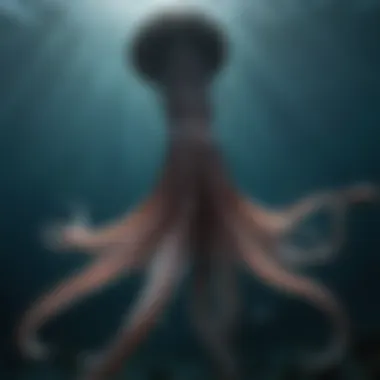
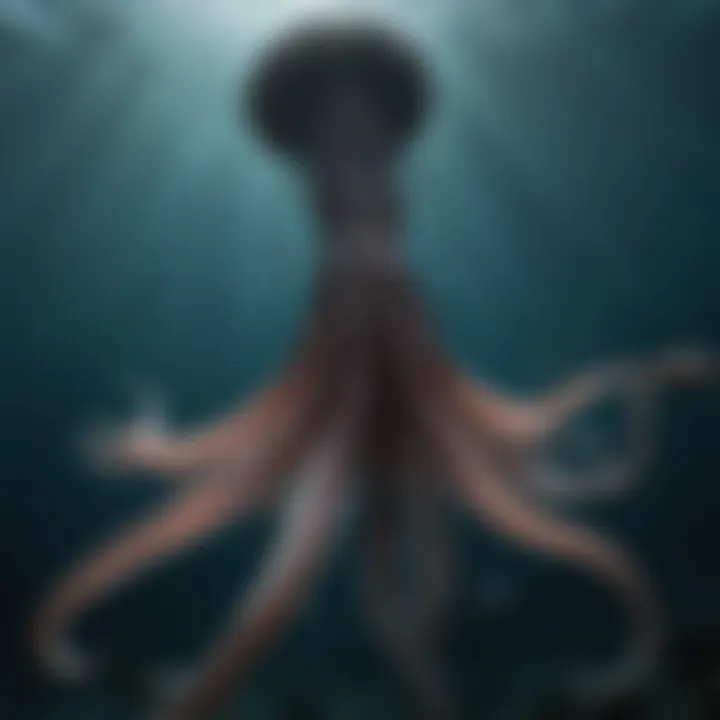
These types of pollution characteristically not only disrupt local ecosystems but also ripple through entire oceanic regions. The presence of plastic in ocean waters is a glaring example of how refuse can be both a symptom of human activity and a tangible threat. It’s an ongoing headache for marine conservationists, who often feel as though they’re plucking weeds from a garden without addressing the root problem.
Effects on Wildlife
The impacts of pollution on ocean life are profound. Marine organisms, from plankton to whales, are affected in a myriad of ways:
- Health issues: Pollution can lead to diseases and deformities in marine species. For instance, chemicals can disrupt hormonal systems in fish, leading to reproductive failures.
- Habitat destruction: Coral reefs, essential for numerous marine species, are particularly vulnerable to pollution, which can cause bleaching and irreversible damage.
- Food chain disruptions: As smaller creatures suffer from pollution, the effects cascade up through the food web, leading to diminished populations of larger species.
The reality of these effects is not just a scientific concern; it's a call to action. If we don’t pay heed to the warning signs, we risk losing many of the ocean's inhabitants entirely, a loss that transcends mere biodiversity.
Mitigation Strategies
Mitigating pollution involves a multi-tiered approach, which is crucial for enhancing the health of the oceans:
- Regulations: Stronger laws on waste disposal and emissions can significantly reduce the entry of harmful substances into marine environments.
- Public awareness campaigns: Educating communities about the consequences of littering and improper disposal practices is key to reducing pollution at the source.
- Innovative cleanup efforts: Creative solutions, such as ocean cleanup projects that deploy barriers and drones to collect plastic, show promise in restoring some levels of health to affected ocean areas.
Such strategies reveal the potential for a collective effort to remedy the damage done to our oceans. They can inspire hope and action, illustrating that it’s not too late to turn the tide.
Overfishing and Its Consequences
Impact on Ecosystems
Overfishing poses a serious threat to marine ecosystems. The extraction of fish beyond sustainable levels disrupts the balance of ocean life:
- Decline of key species: Culling large populations of certain fish can lead to the collapse of entire fisheries, as these species often play critical roles in their ecosystems.
- Alteration of food webs: Removing a significant number of predators or prey shifts the entire food chain, often leading to overpopulation of some species and the decline of others.
The unique feature of overfishing is its far-reaching reach — the consequences do not just affect target species but can reverberate throughout their environments and significantly distort ecological processes.
Sustainable Fishing Practices
Adopting sustainable fishing practices represents a pathway to protect marine life:
- Catch limits: Setting quotas helps prevent stock depletion, ensuring that fish populations have a chance to recover.
- Selective fishing gear: Employing techniques that minimize bycatch can preserve non-target species and promote biodiversity.
These practices hold the potential to create long-term benefits, preserving both the ocean's ecological balance and the economic viability of fishing communities.
Policy Initiatives
Effective policies play a critical role in governing fishing practices and ensuring oceanic health. Key initiatives include:
- Fishery management plans: Comprehensive strategies that incorporate science-based guidelines for sustainable yields.
- Marine Protected Areas: Establishing zones where fishing is restricted or eliminated to allow ecosystems to regenerate.
These initiatives signal a shift towards a more responsible approach to ocean resource management, but they require consistent enforcement and public support.
Climate Change and Ocean Dynamics
Ocean Acidification
Ocean acidification, a direct result of increased carbon dioxide emissions, is altering marine chemistry:
- Disruption of biological functions: Many marine organisms, especially shellfish and corals, depend on stable pH levels to thrive. Lower pH disrupts their ability to form shells and skeletons, jeopardizing their survival.
The unique feature here is the hidden nature of this issue — while we can see pollution or overfishing, acidification often goes unnoticed until its impacts are stark.
Rising Sea Temperatures
Warming ocean temperatures is another crucial issue, impacting everything from coral bleaching to shifts in species distribution:
- Coral bleaching: Higher temperatures cause corals to expel the symbiotic algae they rely on for food, leading to widespread coral death.
- Shifts in habitat: Fish species may migrate towards cooler waters, which disrupts local fishing patterns and ecosystems.
Rising temperatures not only reveal significant environmental changes but also emphasize the urgency of addressing climate change effectively and cohesively.
Mitigation Efforts
Addressing these changes includes a mix of strategies aimed at reducing emissions and improving ocean resilience:
- Global agreements: International cooperation through agreements like the Paris Accord plays a crucial role in unified action against climate challenges.
- Coastal restoration: Rehabilitating mangroves, seagrasses, and coral reefs can help create buffers against climate change effects.
These mitigation efforts highlight the interconnectedness of our actions and the environment, reinforcing the notion that combatting climate change is essential for the future of oceanic treasures.
"Protecting the oceans is not just an environmental issue; it’s an issue of survival for many species, including our own."
As we navigate these challenges, it's imperative to engage with and support ongoing and innovative efforts tailored to restoring the ocean's health and sustainability.
The Future of Ocean Conservation
The conversation around the ocean doesn’t just end with understanding its marvels; it must extend into action that ensures these wonders persist. Ocean conservation holds tremendous significance, not only for ecological health but also for human societies that rely on the ocean as a resource. Addressing the increasing threats posed by climate change, overfishing, and pollution is paramount. This piece aims to shed light on upcoming strategies and initiatives that promise a brighter future for oceanic environments.


International Agreements and Policies
United Nations Ocean Conference
The United Nations Ocean Conference stands as a hallmark event in the commitment towards a sustainable ocean. Convening global leaders, this conference seeks to address challenges that the ocean faces today. One significant characteristic of this initiative is its comprehensive approach, combining scientific research and policy-making to foster collaboration across nations. It draws diverse stakeholders into a unified effort, emphasizing that preserving marine life is a universally shared responsibility.
A unique feature of the United Nations Ocean Conference is its focus on the Sustainable Development Goals, particularly Goal 14, which aims to conserve and sustainably use the oceans, seas, and marine resources. The advantages of this approach lie in its ability to mobilize international funding and resources, along with creating an authoritative and actionable agenda that nations can rally behind. However, the challenge remains in ensuring that commitments translate into ground-level action post-conference.
Regional Initiatives
Regional initiatives are critical in addressing unique local challenges and fostering community engagement in ocean conservation. These initiatives emphasize the importance of addressing specific regional issues while ensuring that local voices are heard. By tailoring approaches to the unique ecosystems and communities involved, these initiatives become highly relevant and effective.
A key characteristic of regional initiatives is their ability to adapt strategies based on localized environmental conditions and cultural practices. This flexibility is why many ocean experts see them as beneficial avenues for real impact. Moreover, local involvement encourages stewardship, as communities become directly responsible for their marine resources. Yet, despite their advantages, regional initiatives may face limitations due to funding constraints or lack of comprehensive political support, creating variability in success across regions.
Community-Based Conservation
Community-based conservation highlights the role local communities play in protecting marine ecosystems. This approach is grounded in the belief that those who depend on ocean resources are often the best stewards of those resources. By empowering local populations, conservation efforts can be both effective and sustainable.
One key characteristic of community-based conservation is its collaborative nature, often involving various stakeholders, including local fishers, conservation groups, and government agencies. Engaging communities in decision-making processes ensures that solutions reflect their realities and needs. The unique feature here is that local knowledge can steer conservation strategies, adding depth to scientific understanding. However, while it offers great potential, scalability remains an issue; what works for one community may not necessarily translate to another due to differing socio-economic circumstances.
Role of Technology in Conservation
Monitoring and Research
Modern conservation efforts heavily rely on technology for monitoring ocean health. Advances in data collection technologies like satellite imagery, underwater drones, and acoustic monitoring allow for more accurate assessments of marine environments. One significant aspect of monitoring is its capacity to provide real-time data, enabling swift responses to environmental threats.
What's particularly beneficial about this tech-driven approach is that research can become significantly more collaborative and expansive. AI and machine learning applications can enhance data interpretation, revealing deep insights into complex ecosystems. Still, challenges may arise, such as the resources needed for technological upkeep and the training required for effective use by local communities and scientists.
Innovative Solutions
In the realm of ocean conservation, innovative solutions are vital in tackling pressing issues like plastic waste and declining fish stocks. Solutions like biodegradable fishing nets and waste collection devices are examples of how technology is reshaping conservation. These advanced tools often provide practical ways to mitigate human impact while promoting awareness among users.
The key characteristic of these innovations is their ability to introduce eco-friendly alternatives without compromising economic viability. Unique to this aspect is the collaboration between tech firms and environmental groups, leading to products that resonate with both industries. However, widespread adoption may face resistance due to existing habits and the costs associated with transition.
Citizen Science Initiatives
Citizen science is becoming an increasingly essential component in ocean conservation strategies. These initiatives rely on the involvement of everyday people in data collection and monitoring, aiding scientists in vast geographical areas. This approach not only broadens the scope of data available but also increases community engagement and education about marine conservation.
The key characteristic of citizen science initiatives is their ability to amplify public participation in scientific endeavors. By providing platforms for individuals to contribute, it creates a sense of ownership and commitment towards ocean health. Unique features include mobile applications that allow users to report sightings of marine life or pollution, effectively turning the public into a knowledgeable army for conservation. Despite their advantages, the reliability of data collected may vary, necessitating rigorous protocols to ensure accuracy.
Educating Future Generations
Importance of Marine Education
Marine education stands out as a cornerstone of future conservation efforts. Awareness is empowering; the more individuals understand the significance of the ocean in regulating climate, supporting economies, and providing food, the more likely they appreciate the need to protect it. This form of education aims to instill a sense of responsibility in upcoming generations towards marine stewardship.
The key characteristic of marine education programs is their interdisciplinary approach, combining science, policy, and ethics, making them robust and engaging. Hands-on learning in coastal areas can foster a deeper connection to marine environments. A unique spotlight on these initiatives is their ability to reach various age groups; however, the challenge lies in integrating these programs into formal educational systems across all regions.
Engaging the Public
Public engagement cannot be overstated in the cause for ocean conservation. Through awareness campaigns, community events, and media outreach, the public must understand the stakes involved in ocean conservation. One significant aspect of engaging the public is generating a grassroots movement that holds authorities accountable. By fostering a community-based approach, awareness can transition into action, effectively mobilizing resources and support for conservation initiatives.
The key characteristic of engaging the public often lies in its diversity of strategies, from artistic expressions to digital campaigns. This unique feature can inspire varied audiences, but a disadvantage may be the challenge of sustaining attention over time.
Promoting Sustainable Practices
Promoting sustainable practices is a proactive measure that seeks to balance human activity with a healthy ocean. From sustainable fishing techniques to eco-friendly tourism, encouraging such practices is essential in mitigating damage to marine habitats. A vital aspect of this promotion involves collaboration with industries and local governments, striving to create frameworks that support sustainable operations.
The key characteristic here is adaptability; strategies must cater to different environments and communities for maximum effectiveness. The unique feature of this lies in its ability to connect local economies with conservation efforts, providing a model for sustainable development. However, there can be resistance from traditional industries to embrace change, requiring nuanced dialogue to overcome entrenched views.
In bridging the gap between conservation goals and human interests, the future of our oceans can depend significantly on these collective efforts.
Ending: The Call to Action
The ocean is not merely a vast body of water; it’s a treasure trove of life, offering countless benefits to our planet. Yet, it's also a fragile environment, facing severe threats from human activities. Therefore, our understanding and active engagement in ocean conservation are crucial. This article has laid bare the complexity of oceanic wonders, spotlighting their irreplaceable role in sustaining Earth's ecological balance.
Understanding Our Role
As individuals, we often underestimate the impact we can have on our oceans. Every choice we make, whether it’s the products we use or the foods we consume, carries weight. Awareness fosters responsibility, enabling us to align our actions with conservation efforts. That means choosing sustainably sourced seafood, reducing plastic usage, and even advocating for better policies at local levels. By educating ourselves about our personal footprint, we can nurture a healthier ocean.
- Educate yourself about marine ecosystems.
- Support sustainable practices: Opt for brands with eco-friendly policies.
- Engage with your community to promote local conservation initiatives.
This isn’t just about protecting a habitat; it’s about securing our very future.
The Importance of Advocacy
Advocacy is the voice of change in a world often marked by indifference. When we speak up about the importance of protecting our oceans, we send a clear message that these vast blue expanses, teeming with life, deserve preservation. Organizations like the Ocean Conservancy and Project AWARE are pioneering efforts to tackle ocean pollution and overfishing while inspiring others to join the cause. It’s a multifaceted fight that necessitates both grassroots movements and support for international accords.
"The ocean is a central part of our life. It’s not a separate thing. It’s part of the global ecosystem on which we depend" – Dr. Sylvia Earle.
This quote summarizes the essence of our advocacy efforts. By participating in ocean clean-up days or promoting sustainable fishing policies, each of us contributes to a larger movement aimed at safeguarding our marine heritage.
In sum, the future of our oceans rests in our hands. We must be vigilant stewards, advocating for change and implementing small but significant practices in our daily lives. By standing together for ocean health, we can ensure that the wonders under the waves continue to thrive for generations to come.















